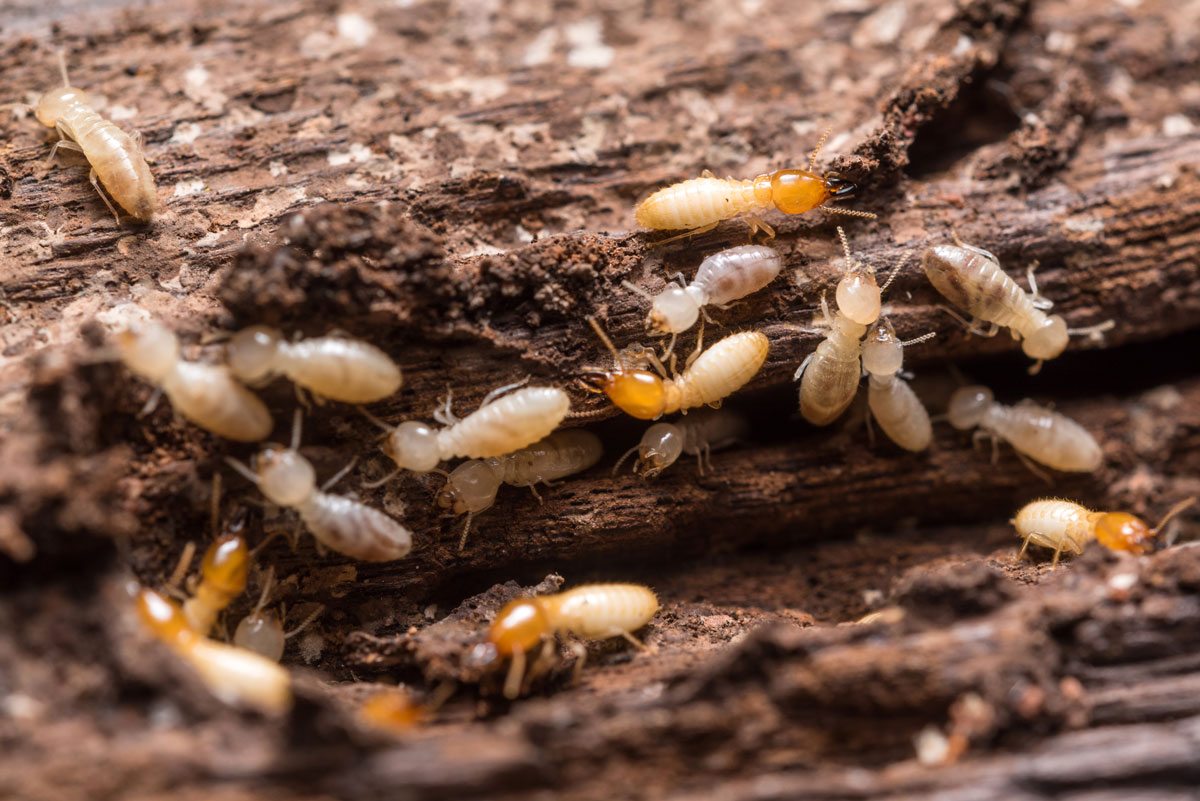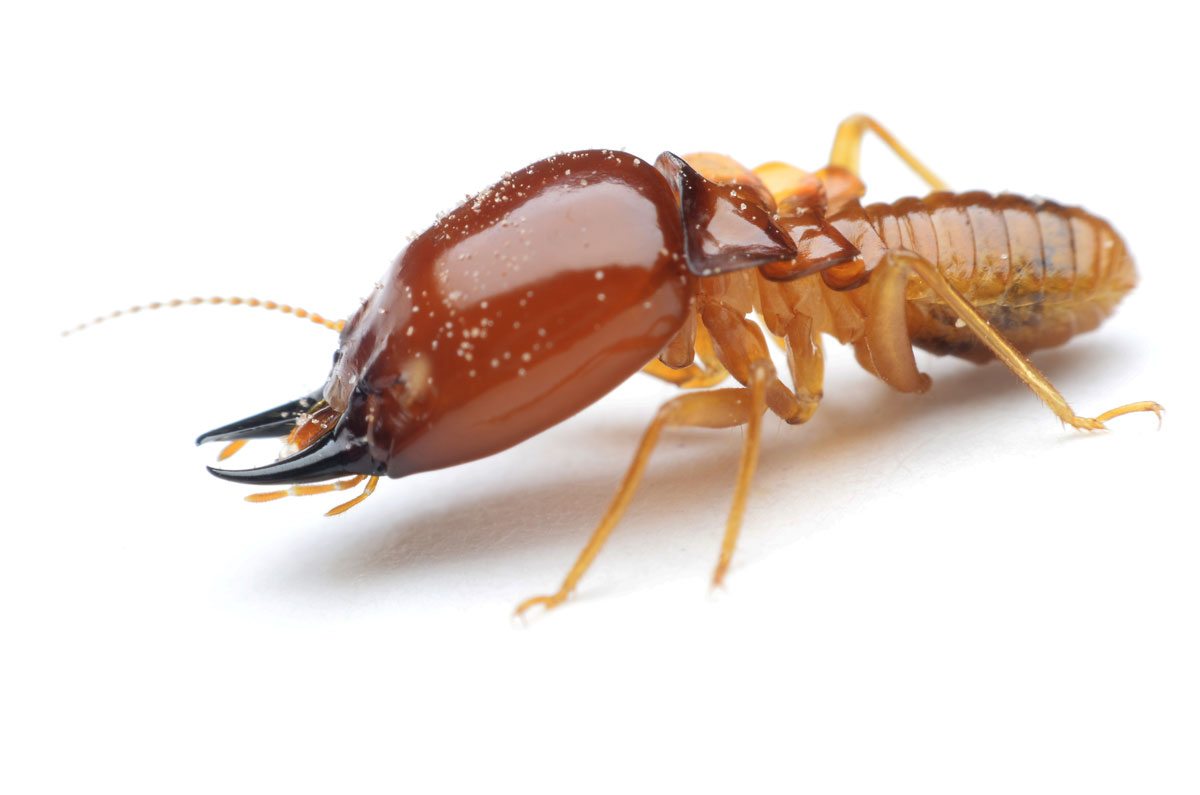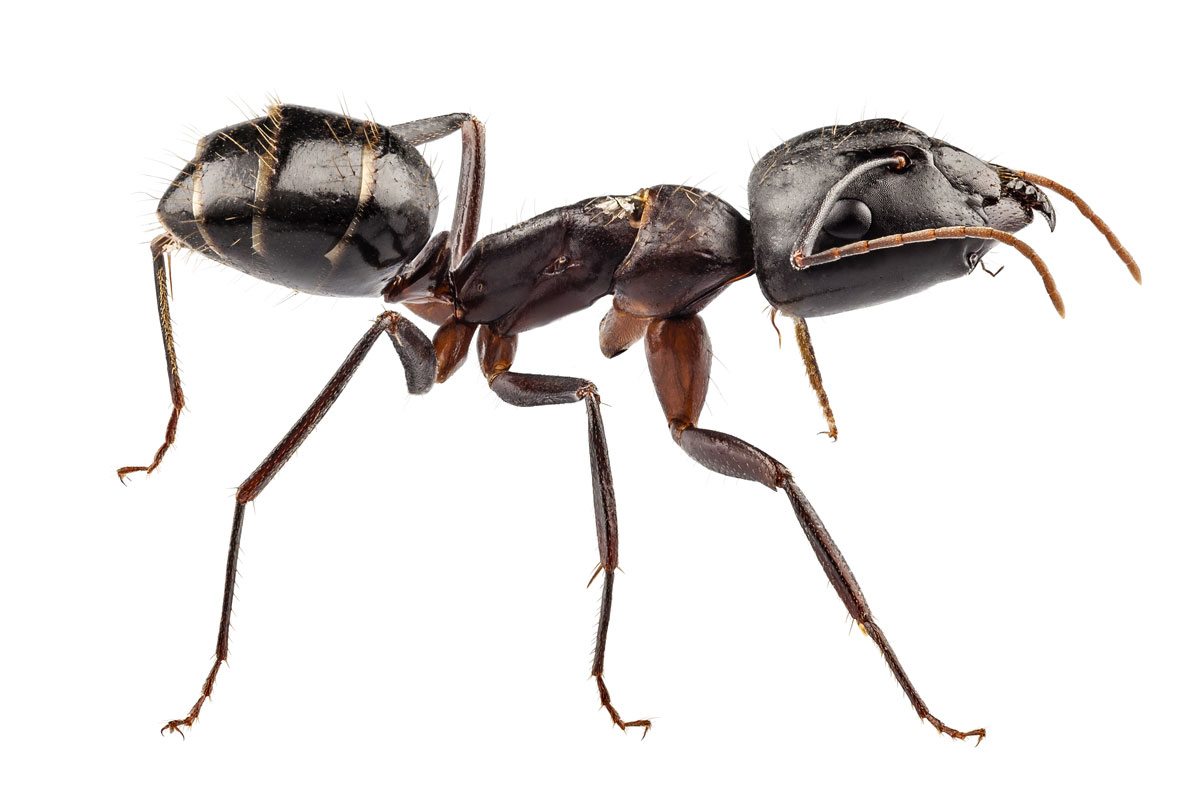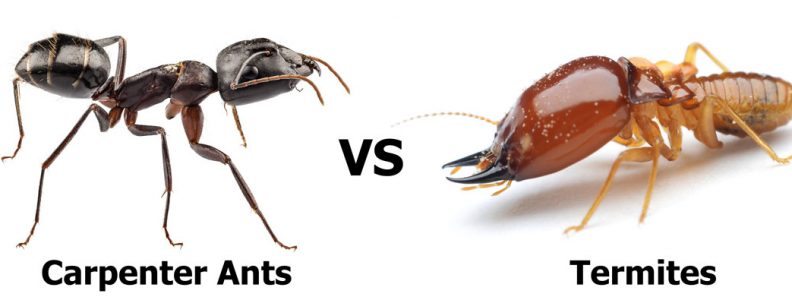You can no longer ignore the damaged woodwork in your home or business. You swear that when it’s quiet you can actually hear the wood being munched away from the inside. Your initial diagnosis: termites. But are you sure it’s not an infestation of the similar – and slightly less worrisome – carpenter ants?
Whether you’re thinking of taking care of this problem yourself or calling in your friendly local pest control operative, read on for tips on how to know which insect you’re dealing with. You’re going to need this information so you can determine the best method for ridding your home of the pest effectively – and keeping them away for good.
Meet the insects
Termites love to eat wood

This is terrible if they get hold of your shed, garage or porch – a 2000 study estimated that termites cause around $1.5 billion’s worth of wood structure damage to the southwestern United States every single year. Termites thrive in the warm indoors, which can also be pretty bad for your baseboards, window frames, and furniture.
What’s more, termites are insidious: if you’re not vigilant, an infestation can go undetected for several years, by which time irreparable damage could have been done to your home or workplace.
Carpenter Ants live in wood
If it turns out that you’re plagued with carpenter ants rather than termites, I have a little good news and quite a lot of bad news.
The good news is that carpenter ants do not love to eat wood – as their name suggests, they just make stuff with it, ie their nests – so they don’t cause quite as much damage as termites.
The bad news is that the nests carpenter ant build will still damage your woodwork: they expand through the wood as the population of the colony grows inside it, and they may also develop satellite nests throughout the building.
The worse news is that they do love to eat the same kind of food as other ants, including trash, other bugs, and – well – food. Ever had a picnic interrupted by ants? Now picture that in your kitchen.
Furthermore, since carpenter ants prefer moist, softer wood – unlike drywood termites – their presence could indicate bigger problems in the infested building, such as leaks, malfunctioning drainage, or decay.
What do they look like?
If you catch sight of one of these critters, you can tell the difference between a carpenter ant and a termite by looking at three things: the body, the wings, and the antennae.

Like most ants, carpenter ants are nipped in at the ‘waist’, with a slim part in between their thorax and abdomen; termites, on the other hand, have bodies of a uniform width.
Each kind of insect has four wings, but try and take a closer look. While termites’ paddle-shaped wings are all the same length, carpenter ants have pointed wings that are larger at the front than the back. Carpenter ant wings may also appear veiny, whereas you’re unlikely to be able to see veins on a termite’s wings.
If you spot loose, broken insect wings near to damaged wood, you almost certainly have a termite problem: termites’ wings break off easily, while ants’ wings do not.
Finally, check out the antennae. Carpenter ants have ‘elbow antennae’ that grow outwards before bending forwards; termite antennae are straight.

How can I tell if they’re infesting my home or workplace?
Don’t forget, ants travel great distances looking for food: spotting an ant or three in your kitchen doesn’t necessarily mean an infestation. So – short of a full swarm – how can you find out if termites or carpenter ants are nesting nearby?
Take a look below wooden items in your home or workplace. If they are infested with carpenter ants, there will usually be a pile of wood shavings – a little like when you sharpen a pencil – gathering beneath. This pile of debris may also contain the remains of insects eaten by the ants. If fine sawdust – known as ‘frass’ – falls from your ceiling, that’s a likely sign of carpenter ants.
You could also try listening hard, close to wooden items or walls. Carpenter ants often make a faint rustling, humming or crunching sound. If you don’t hear anything, tap on the wood: termites are usually too quiet to be heard, but you will hear a hollow sound if they have burrowed inside.
If you can see inside the hollowed-out wood, it should be clear what kind of insect has caused the damage: carpenter ants are clean, and polish their ‘galleries’ (this is a fancy term for the small ‘rooms’ insects create inside the wood) until they are smooth. Termite galleries are more likely to contain soil, mud, and fecal pellets.
Where should I look?
As a general rule, look for termites in dry wood – almost any dry wood – plus cracks in brick or cement structures.

Carpenter ants are somewhat fussier and prefer to nest in moister, softer wood: look anywhere that wood comes into contact with rain (porches, firewood piles or other lumber, window sills) or with soil, (porch columns or swing sets). They also like ready-made hollow structures, such as wall voids and hollow doors.
What do I do if I have carpenter ants or termites?
Any infestation in your home or workplace is troubling. But by checking whether your troublesome insects are quiet, broad-waisted, drywood-loving termites or noisy, ant-shaped carpenter ants with mismatched wings, you can more easily assess the likely extent of the damage – and understand what you need to do to put it right.
If you have Carpenter Ants
If you know you have a carpenter ant problem but you’re struggling to find out where they’re nesting, set some bait – like a little sugar – and then follow them home once they’ve fed on it. They will head back to their nest in a straight line.
You can also contact the experts at Pronto Pest Management to schedule an inspection so they can determine the extent of the damage and the best solution for ridding your home of these pests and others like ants, mice, rats, or bed bugs!
If you have Termites
While we do not offer termites services directly, we have a network of pest professionals that we can refer you to.

